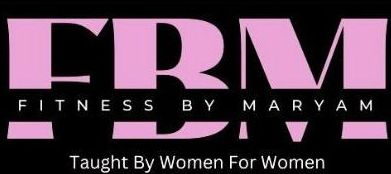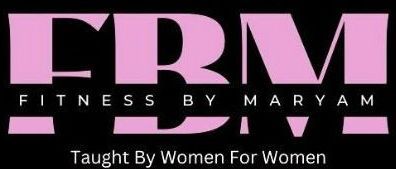Recovery is Training Too: Fitness, Rest, and Well-Being
Most people take their workouts pretty seriously and are all about going hard in the gym. You’re eager to see the results of your hard work and push yourself to the limit to do so.
But how often do you prioritize rest and recovery the same way you do exercise?
Too much of anything isn’t good for you, and the same goes with working out. You want to push yourself, but not at the expense of getting hurt or experiencing injury. Rest periods give your body the time it needs to heal from your weekly exercises and avoid burnout.
If you’re interested in learning how to improve your rest days and enhance your recovery periods, you’re in the right place. We’ll go over a few tips to help you get started. But first, let’s go over a few reasons why recovery is so important for your wellbeing.
Why is Rest & Recovery Important?
There are several reasons why you should prioritize rest as part of your workout routine:
- Muscle Repair: In between workouts, it’s imperative that you get enough rest so your body can repair and regrow its muscle tissue. As you exercise, your muscles form microscopic tears so they can regrow into stronger, thicker tissue, increasing your strength. Without proper recovery, you could disrupt this process and prevent your body from repairing tissue, leading to injury.
- Prevent Injury: Have you ever tried exercising while you were tired or didn’t have proper form? You probably felt like you weren’t getting all that you could of the workout or weren’t able to perform to the best of your ability. One of the most important parts of hitting the gym is to be safe and practice proper form. It’s easier than you think to hurt your back or lose your balance if you’re tired and haven’t recovered properly, which can eventually lead to injury.
- Avoid Burnout: To see the fruits of your labor, consistency in the gym is key. Intentional exercise at least 3 times a week will ensure that your body gets the movement it needs, along with other exercise like walks or hikes. When you skip rest days, you put your body through extra trauma that it will have a harder time recovering from, experiencing chronic muscle soreness and pain. As a result, your body won’t have the energy or strength required to perform your exercises, leading to burnout. And when burnout occurs, it can be difficult to come back from. You should take your rest days as seriously as you do gym days so that you don’t face inconsistency, discomfort, and lack of results.
Now that we know the benefits of recovery, let’s go through a few helpful tips so you can get started.
5 Tips to Rest & Recover
If you aren’t sure how to recover properly, here are a few tips to help you get started.
- Take Enough Time
There are many factors that come into play when deciding how long you need to rest for, such as what kind of training you’re doing, your age, and your current fitness level. There’s no one-size-fits-all, but as a beginner in the gym, you should aim for at least 1 to 3 rest days per week.
You might be tempted to go as hard as you can and shorten your recovery time, but this will only work against you. Plus, just because it’s a rest day doesn’t mean you need to sit on the couch with no movement all day. Even a short walk in your neighborhood or hike on a trail is enough to boost dopamine and make you feel good without breaking a sweat.
If a hike in nature sounds like something fun to you, join us for our
Hike & Meditate event on August 31st at 10 a.m. In partnership with Manzil, FBM welcomes you to Swallow Cliff Woods to explore nature with Breathe & Be Coach Zareen. Members are free to join!
If you’re interested in joining us for some outdoor fun before we wrap up the summer,
sign up today!
2. Consume Enough Protein & Carbs
Consider what you consume on your days off from the gym. Everyone deserves a cheat day here and there, but are you using rest days as an excuse to consume thousands of unnecessary calories? If so, it might be time to take your hand out of that chip bag.
Eating protein and consuming a good amount of carbs will fuel your body with the energy and amino acids it needs. Protein supports optimal muscle recovery so that, when it’s time to return to the gym, you’re well energized and ready for the challenge.
Some examples of high-protein foods and carbohydrates you can choose from include:
- Oats
- Red meat
- Bananas
- Sweet potatoes
- Oranges
- Blueberries
- Quinoa
You don’t have to stick to a boring diet just because you want to be healthy. Explore your options in the kitchen to see what you enjoy and how you can implement those ingredients into your everyday meals and snacks.
3. Continue Healthy Practices
Just because it’s time to give your muscles a break doesn’t mean you need to become lazy or slack on other habits. Staying consistent in all areas of life is also key to staying consistent in the gym.
Yoga and meditation are great ways to stay grounded during recovery days while staying active. Breathwork calms your nervous system and improves your mental health by reducing stress and enhancing emotional regulation.
You can also practice mobility drills, which are exercises that improve your joints’ range of motion and flexibility. They also improve blood flow and aid your overall recovery as long as they are low-impact and focused on gentle movements.
Some mobility drills you can practice include foam rolling, hip circles, shoulder retractions, and even light walks.
4. Prioritize Sleep
It can be easy to underestimate how important sleep is as part of your recovery routine. But because the body repairs and rebuilds tissues while you sleep, it’s essential. On top of that, it also balances hormones, reduces stress, and supports the immune system.
The
National Library of Medicine found that “sleep is necessary to provide restoration with respect to molecular, cellular, or network changes” (2015). It serves to restore the body to its normal function, especially after rigorous physical activity.
5. Utilize The Right Tools
On your days off from the gym, you might consider ways to help your body repair itself and soothe your sore muscles.
Compression garments are made of elastic fabric that’s used to apply controlled pressure to the body to improve blood circulation and reduce inflammation. This will reduce muscle soreness and fatigue, speeding up the recovery period.
Foam rolling exercises use self-massaging techniques that also reduce muscle soreness as well as increase blood flow, enhance flexibility, and prevent injury. All you have to do is roll back and forth on a foam roller for 30-90 seconds at a time, making sure to avoid rolling directly on your spine or joints.
Infrared saunas have also become increasingly popular over the years as a way to wind down between workouts. Unlike a regular sauna, an infrared sauna works at a lower degree level, requires less power, and uses infrared light as a heat source rather than a heat stove.
Some benefits of spending time in a sauna include enhanced circulation, better sleep, and reduced stress. And all you have to do is sit!
At Fitness By Maryam, we offer our sauna to anyone who’s interested, member or not. We also have Normatec boots which you wear to quicken recovery and relieve muscle soreness. If this sounds like something you’re interested in,
book our sauna and boots today!
Join Us at Fitness By Maryam!
Any questions? Feel free to reach out to us via email, phone call, or stop by the gym for a tour! We offer both in-person and online Zoom classes so you can enjoy working out from anywhere you choose!
You can also check out our upcoming events for this month on Instagram at
@FitnessByMaryam.
We offer various services like:


